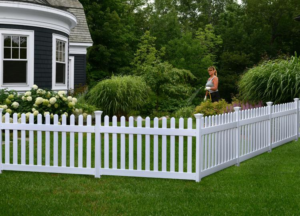Higuera Tree Care is the application of arboricultural methods like pruning, trimming and felling to woody vegetation in built environments.

Newly planted trees need supplemental watering to help them survive and thrive. Watering a tree at least five gallons per inch of caliper (tree trunk diameter six inches from ground) should be done regularly.
In many cases new tree owners don’t water their trees enough, which can stunt or even kill them. However, some people also water their trees too much, which can be equally harmful. Watering too often can starve the roots of oxygen and encourage the development of root rot pathogens. Watering too little can also be dangerous for your trees, as it can cause them to grow weakly and be more susceptible to pests and diseases.
The best way to determine how much to water a tree is to regularly check soil moisture. For young or newly planted trees dig down four inches in the soil around the base of the trunk to see if it is dry. For mature trees check the soil 6-12 inches deep. If the soil is not dry then it is time to water, but be sure not to over-water, as this can be just as harmful as not watering at all.
Generally speaking, a good rule of thumb is to water a tree every other day during hot or drought conditions. However, this can vary based on weather and site conditions. For example, if you have very sandy soil, your trees will require more frequent watering than those in clay soil.
Using a soaker hose, which can be wound around the drip zone of your trees, is a great way to avoid wasted water and make the most of the amount that you do put down. Additionally, watering in the evening or morning helps minimize the amount of water that is lost to evaporation. It’s important to focus the watering directly at the area beneath the drip line, where most of a tree’s absorptive roots are located.
Mulching
Mulching trees is a simple yet highly effective practice that enhances tree health and extends their lifespan. A layer of organic mulch – preferably wood chips – prevents weeds from growing, retains soil moisture, moderates the soil temperature, enriches the soil with organic materials and improves root growth by breaking up dense soil. Additionally, it limits grass competition and helps prevent damage from lawnmowers.
In nature, fallen leaves and organic debris create a natural mulch that insulates roots, suppresses weeds, improves soil structure and, as it decomposes, provides nutrients to the soil. In urban settings, property owners often remove leaf litter for tidiness and add a layer of woodchips or other mulch to mimic this natural process.
It’s important to keep in mind that not all mulch is created equal. Some mulch is better than others for different tree care purposes and some types of mulch can even be detrimental to a tree’s health.
For example, it’s best to avoid wood chip mulch that is not derived from a sustainable source and has been treated with harsh chemicals because these chemical leach into the soil affecting its acid balance and overall quality. It is also important to avoid piling mulch into a volcano-like mound around the trunk of a tree because this can interfere with the trunk’s ability to take in oxygen and water through its phloem tissue.
The simplest way to apply mulch is simply by spreading it evenly in a thin layer over the entire soil surface in the root zone of the tree. The thickness of this layer depends on the terrain and soil conditions, but it is usually no more than 2 to 4 inches thick.
Fertilizing
Trees are beautiful parts of a home landscape, but they also require care and maintenance to ensure their health. A regular fertilization program can help trees stay healthy and strong, and can also improve the overall look of the yard.
Tree fertilization is important for tree care because it helps to supply the nutrients that the tree needs for growth and vitality. However, it is important to note that fertilization is not a cure-all or a way to remedy serious problems such as insect infestations and internal decay.
Fertilizing is especially effective when done in conjunction with other maintenance measures such as watering, mulching, and pest control. This is because these measures can help to prevent nutrient deficiencies in the first place.
The ideal time to fertilize is late summer through September. This is because the root absorption of nitrogen is very efficient at this time, and it can be stored and converted to forms that can support the spring flush of growth.
Another benefit of fertilizing is that it can help to strengthen the root system, which can be beneficial for the long-term health of the tree. This can help to reduce the risk of damage from wind and other environmental factors.
It is also important to use a slow-release fertilizer when applying it to the roots of a tree. This will ensure that the nutrients are released evenly, and won’t harm the soil or roots. Also, it is important to apply the fertilizer at the right time, as doing so can have a big impact on how well it works. For example, it is important not to fertilize a tree if it is suffering from drought stress, because this can lead to root damage.
Insect Control
While trees are a beautiful and natural part of any landscape, they are not immune to disease and insect infestations. Many pests negatively affect the health of a tree, and can lead to premature death if left untreated. Fortunately, regular inspections and proper maintenance practices can help prevent problems.
Insect control trees is an important part of any comprehensive care plan. Pests can damage or degrade the leaves, bark and even the wood of a tree, leaving it weak and vulnerable to diseases and other adversities. Insects can also cause distorted growth and wilting foliage, which can have a major impact on the health of your landscape.
In addition, insect control can be beneficial for preventing disease and promoting overall tree health. The emergence of invasive species like the emerald ash borer has made it even more important to keep up with regular insect control.
Early spring is an ideal time to treat your tree with dormant oil. Applied while the weather is still cool, dormant oil sprays suffocate insects and insect eggs that have overwintered on your trees and shrubs. This helps them avoid damaging your yard and shrubs when they hatch in the warmer weather.
Other forms of insect control can include soil and trunk injections. Injections deliver insecticide directly into the tree, where it can be absorbed more efficiently than a surface spray. This is especially effective for reducing the damage of root-feeding insects like aphids, scale and caterpillars, and boring insects such as borers. Injections can be supplemented with nematodes or fungicide for more targeted treatment. Neem oil (azadirachtin) is another organic treatment that can protect your trees and ornamental plants from most pests. It acts as a feeding repellent, suppresses fertility and alters the development of some pests.
Disease Control
Trees have evolved over millions of years to fight off diseases, insect infestations and other threats. This natural defense system includes physical barriers like bark or wax on the leaves, and chemical compounds that counter pathogens. Unfortunately, due to factors such as climate change and global trade, tree disease outbreaks have become more common. Fortunately, trees have the ability to recover from disease outbreaks if they receive timely intervention and care.
Fungus diseases often damage the foliage of ornamental and shade trees. These diseases are encouraged by cool, wet weather early in the growing season. Many disease symptoms are not severe, but repeated infections can stunt growth and weaken the overall health of the tree.
Some diseases are more damaging to the health of a tree, such as canker. Cankers are scab-like lesions that develop on the bark, trunk or branches of the tree. These lesions can lead to branch dieback, limb loss and even death. An arborist can identify the cause of a canker and provide effective treatment without spreading the disease to other plants or trees in the landscape.
Viruses and bacteria can also damage the health of a tree. These organisms are usually introduced into a landscape by the introduction of new plant material or by humans transporting infected materials. Proper planting site selection, soil analysis and fertilization can help reduce the risk of disease and pest infestation.
Keeping your trees healthy is an important part of ensuring the beauty and value of your property. With regular inspections, proper pruning and nutrient management, you can prevent serious problems and extend the life and value of your trees. The experts at Omni Tree Service are committed to providing preventative care and treatments to preserve the health of your trees.








